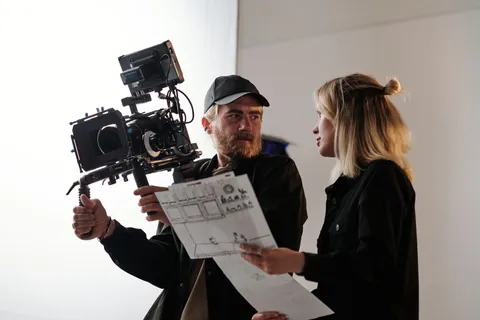Embarking on the Scriptwriting Journey: A Beginner's Guide
Scriptwriting is an exciting and complex journey filled with creativity, narrative construction, and an intricate understanding of dramatic structures. It's a realm where words turn into worlds, characters come to life, and narratives captivate audiences. This guide aims to illuminate the path for beginners, providing them with the fundamental techniques and insights of scriptwriting. Whether you're aspiring to write for the silver screen, a television show, or an immersive video game, understanding the art of scriptwriting is the first step towards creating engaging narratives that not only entertain but also evoke emotions and provoke thought.
Understanding Scriptwriting Basics Video Production in Australia
The world of scriptwriting can seem daunting at first glance. It is a specialized form of writing that involves crafting scripts for various media such as films, television programs, video games, and even radio shows. It requires a delicate balance of several key elements—developing compelling characters, creating engaging dialogues, and constructing riveting scenes—all of which work together to weave a story that can grip an audience from beginning to end. But fear not, as with any skill, scriptwriting can be mastered with understanding, practice, and a sprinkle of creativity. Let's unravel these fundamental techniques that every budding scriptwriter should have in their arsenal.
Create Memorable Characters Video Production in Australia
Characters are not just the inhabitants of your narrative universe, but they are the driving force of your story. They're the connective tissue between your audience and the world you've created. Therefore, investing time and thought into developing well-rounded, relatable characters with clear goals, palpable motivations, and intrinsic conflicts is crucial. These characters become the pillars upon which your story is built, and they carry the weight of your narrative. As a scriptwriter, your characters give voice to your ideas and themes, forming the backbone of an engaging narrative that will resonate with your audience.
READ MORE :
Video Marketing Strategy: The Ultimate Guide
How to Create the Perfect Promo Video
Craft Engaging Dialogues Video Production in Australia
If characters are the heart of your script, then dialogue is their voice. Dialogue is a powerful tool in the scriptwriter's toolbox, serving to move the plot forward, reveal character traits, and express emotions. It can turn a bland scene into a memorable one, making characters feel real and relatable. It's critical to craft dialogues that not only sound authentic and distinctive but also align with your characters' backgrounds, personalities, and the story's context. Remember, every line of dialogue should serve a purpose, whether it's advancing the plot, revealing something about a character, or setting the mood for a scene.
Master the Three-Act Structure
The three-act structure is a classic storytelling framework that has stood the test of time, and it remains a vital tool in a scriptwriter's kit. It consists of three integral parts—setup, confrontation, and resolution—each of which serves a specific function in the narrative. The setup introduces the characters, the world they inhabit, and the central conflict. The confrontation deepens the conflict, pushing characters to their limits. Finally, the resolution brings a satisfying conclusion to the story, resolving the conflict and showing how the characters have changed over the course of the narrative. Understanding this structure can provide a roadmap for new scriptwriters, helping shape a well-paced and gratifying narrative that keeps audiences hooked.
Show, Don't Tell!
One of the cornerstones of scriptwriting—and writing in general—is the principle of "Show, Don't Tell." Instead of relying on exposition or character dialogues to provide information, scriptwriters should use visual elements and actions to convey character emotions and intentions. In scriptwriting, the idea is to allow audiences to infer the underlying emotions, tension, or conflict by showing it through the characters' actions, reactions, or circumstances rather than explicitly stating it. This technique not only enhances the audience's engagement but also deepens their emotional investment in the story, making for a more compelling viewing experience.
Edit and Revise
Scriptwriting is a creative process that requires constant refining and polishing. It's about continuously honing your script for greater clarity, succinctness, and dramatic impact. As you write, you'll invariably find aspects that need reworking—scenes that need tightening, dialogues that need sharpening, or characters that need more development. Editing and revising are an integral part of scriptwriting, a cyclic process that you revisit many times before you can call your script complete. It's through this process that you transform a good script into a great one. Remember, every great script out there went through countless revisions before it became the masterpiece we see on the screen. Video Production in Australia
Ready to start your scriptwriting journey? Use these beginner's techniques to craft your first script. Dive deeper into the world of scriptwriting with our advanced guides and resources.
Seeking more than just a video? Envision content that engages, resonates, and fuels your revenue growth. Step into the world of Video Production in Melbourne, Adelaide, and Sydney with Vimi, where we blend cinematic aesthetics with a keen business strategy.





